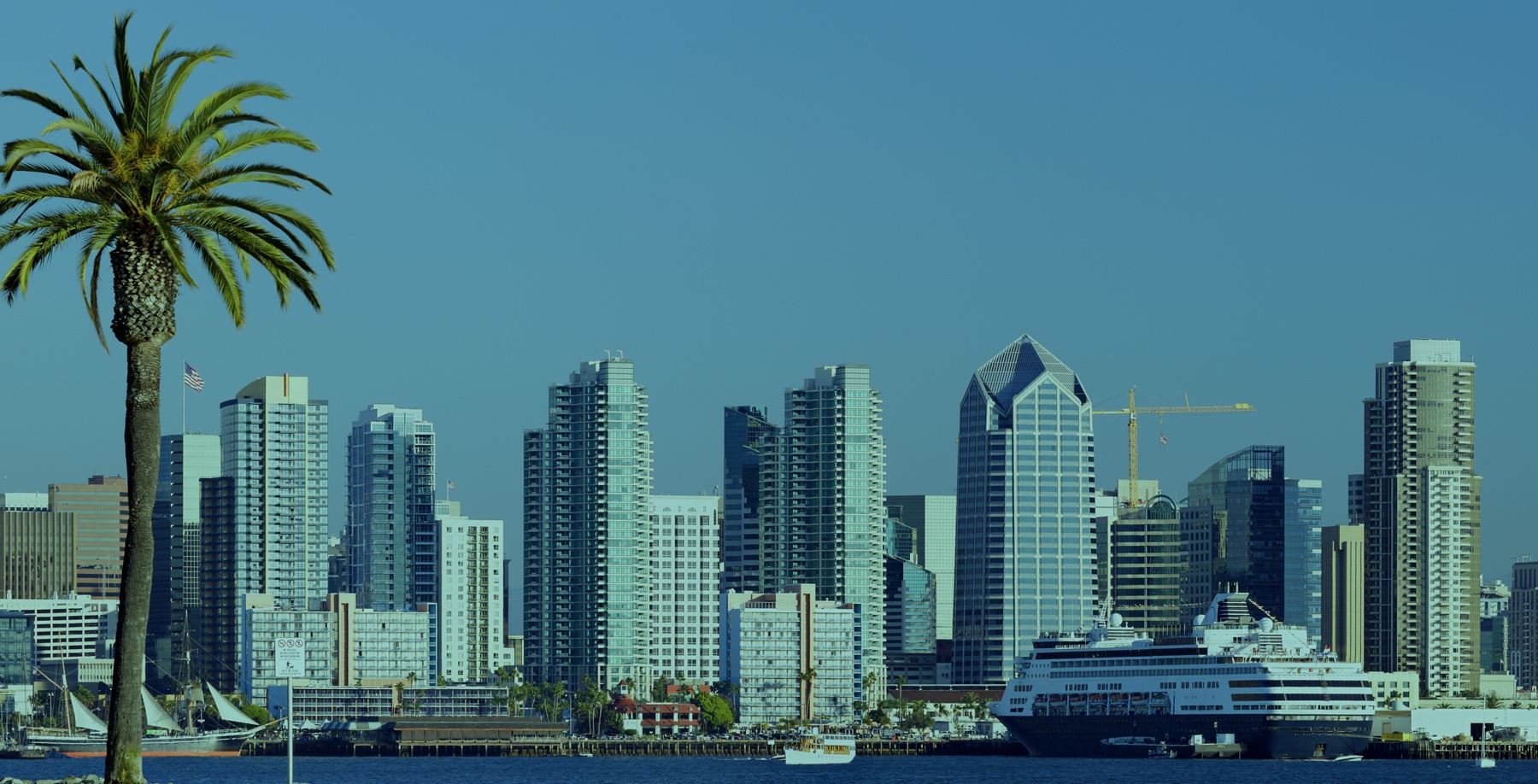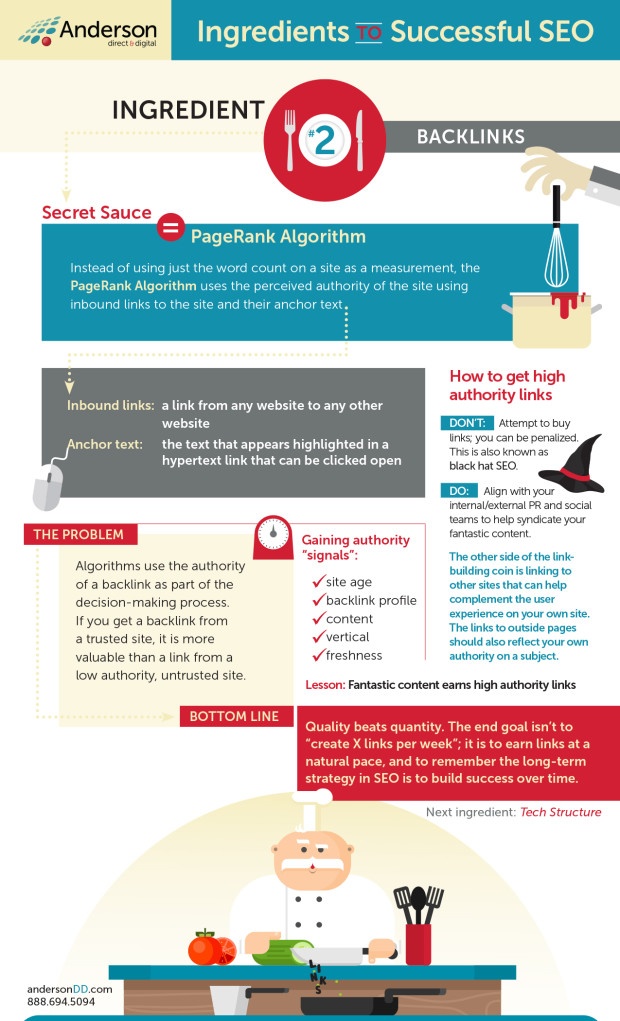Last week we talked about content and why it’s the most important ingredient to having a winning SEO strategy. To summarize, search engines use incredibly complex, lightning-fast algorithms to make split-second decisions on who is an authority on a search query, and the core of the decision-making process starts with content. In case you missed last week's introduction to the first of four ingredients to a successful SEO campaign, you can read all about it here and see the corresponding infographic here.
Ingredient 2: Backlinks
But how does a search engine know what content is good and what isn’t? Years ago you could use keyword, title, or meta stuffing to trick early algorithms to rank your pages, the concept being that a webpage saying “Acme Widgets” 20 times was a better source than a webpage saying it only 10 times. That’s where Google’s famous PageRank algorithm came in. Instead of using just the count of words on a site as a measure, it would use the perceived authority of the site using inbound links to the site and their anchor text.
- Inbound Links: A link from any website to any other website. As an example, here is an inbound link to http://google.com originating from AndersonDD.com.
- Anchor Text: The highlighted “link” portion of a link. In the example above, I used a “naked” link, which basically means I just typed in the actual URL. Google.com and www.google.com are also examples, though we can also manipulate the highlighted text as such: “Buy Acme Widgets”.
Now, consider a user goes to a search engine and types in “Buy Acme Widgets.” The search engine will now look at on-page content along with inbound links in its decision. In general terms, that link above for “Buy Acme Widgets” helps a website rank number one for that keyword phrase, so the goal is to get more of those.
But wait! It’s not that simple.
As mentioned above, algorithms use the authority of a backlink as part of the decision-making process. If you get a backlink from a trusted site, it is more valuable than a link from a low authority, untrusted site. Gaining authority as a site takes a lot of time and effort, and search engines use a lot of “signals” to determine it, including: site age, backlink profile, content, vertical, freshness, etc. All told there are dozens of signals engines use to make a consideration on authority for any given site and any given keyword phrase.
What’s the lesson then? Use great content to earn high authority links.
So how do you get them?
Well, a long time ago it was as simple as buying them. Algorithms are constantly being updated to provide better results, but it was as straightforward as e-mailing a webmaster asking for a link or offering to pay for one. That’s what we call black hat SEO, or trying to rank a site that hasn’t put in the hard work to earn it the correct way.
These days it’s a lot harder to trick the engines, though you can still hop over to Fiverr or Elance to find “SEO experts” willing to sell you hundreds or thousands of backlinks for peanuts. The end result if you go this route will be the same: You won’t rank for the phrases you want, and it’s very likely your site can be penalized for trying to manipulate the engines.
That’s why we don’t want to trick the engines; we want to use our awesome content to attract outside links from high authority sites. This is why you now see SEO, Public Relations (PR), and social marketing beginning to converge into a multidisciplinary partnership.
If we create a great piece of content that we want to use in part to earn links, one of the best ways to get it out there is to align with your internal/external PR and social teams to help syndicate the content. From a PR perspective, journalists and online publications want interesting stories with perspective from Subject Matter Experts (SMEs). From a social perspective, people want the same thing.
The other side of the link-building coin is linking to other sites that can help complement the user experience on your own site. If you’re a company that sells bicycles locally, this could be a link to a local events page that has resources for bike paths in your city. If you’re a regional brewery, that outbound link could be linking to a home-brewing enthusiast’s blog that shows people how to make their own beer. The list goes on, but the point is the links to outside pages should also reflect your own authority on a subject.
To close out this overview on inbound links, one thing that needs to be stressed time and again is quality beats quantity. The end goal isn’t to “create X links per week/month”; it is to earn links at a natural pace and to remember the long-term strategy in SEO is to build incremental success over time.
Next ingredient: Tech Structure






